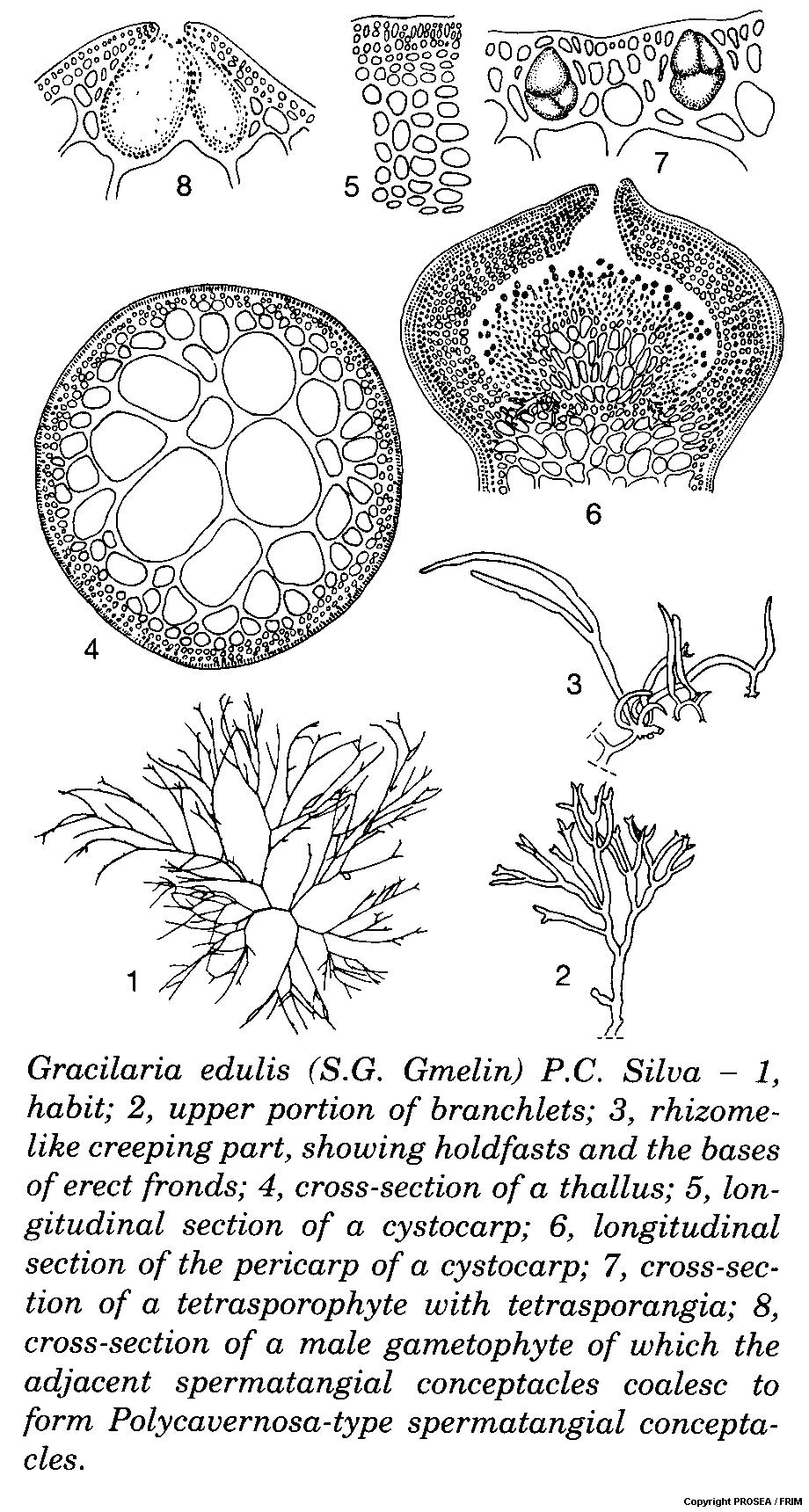Gracilaria edulis (S.G. Gmelin) P.C. Silva
Family
Gracilariceae
Synonyms
Fucus edulis S.G. Gmelin, Polycavernosa fastigiata C.F. Chang & B.M. Xia, Hydropuntia fastigiata (C.F. Chang & B.M. Xia) M.J. Wynne.
Vernacular Names
| Malaysia | Agar-agar karang (Johore), sare (collectively with other Gracilaria spp.) (Malay, Kelantan) |
| Indonesia | Sayur karang, janggut monyet, bulung embulung (Java, Bali). |
| Thailand | Sarai woon. |
| Philippines | Gargararao (general name for all Gracilaria and all Gracilariopsis in Ilocos Province). |
Geographical Distributions
Gracilaria edulis occurs in the Indian Ocean (East Africa, Mauritius, Laccadive Islands, India, Sri Lanka, Nicobar Islands, Andaman Islands) and in the Pacific Ocean (China, Japan, Micronesia, north-eastern Australia). In Southeast Asia, it is found in Burma (Myanmar), Thailand, Vietnam, Malaysia, Singapore, Indonesia, the Philippines and Papua New Guinea.
Description
Gracilaria edulis can grow up to 27 cm tall. It is brownish-red and arises from a discoid holdfast. The branching is dense and fastigiated, extremely divergent, dichotomous to trichotomous, in up to 7 orders and with branches at long intervals. The branches are 1-1.5 mm in diametre, cartilaginous, flexuous, with or without a constriction at their bases or with only a slight constriction, which is cylindrical and ends in pointed apices.
The thalli which are in transverse section consist of roundish thin-walled medullary cells, measuring 100-300 µm in diametre, and 1-2 rows of small cortical cells 5 µm in diametre and with an abrupt transition from medulla to cortex. The tetrasporangia are ovoid to oblong, cross-shaped, measuring 8 µm x 16 µm and scattered over the surface of thalli. Spermatangia are in the deep pot-like conceptacles and with multiple cavities, which are arranged in groups of up to 10. The cystocarps are spherical, measuring up to 2 mm, with beaked tips and constricted at the bases. The pericarp is thick where it consists of 9-14 rows. The cells of the outer rows are oval while the inner cells are horizontally compressed. The basal absorbing filaments are robust with many branches.
Ecology / Cultivation
Gracilaria edulis is commonly found in association with G. changii (B.M. Xia & I.A. Abbott) I.A. Abbott, C.F. Zhang & B.M. Xia. It grows abundantly on rocks, coral, mangrove roots, fish cages and on intertidal mud flats. Plants growing on fish cages have thicker primary branches and form much-branched fastigiated tufts. Entangled or loose clumps are formed on muddy substrate. In violent seas, the plants readily break into pieces, which may form the starting points of new plants when they come into contact with a suitable substrate.
Line Drawing / Photograph
References
- Plant Resources of South-East Asia No.15(1): Cryptogams: Algae.




